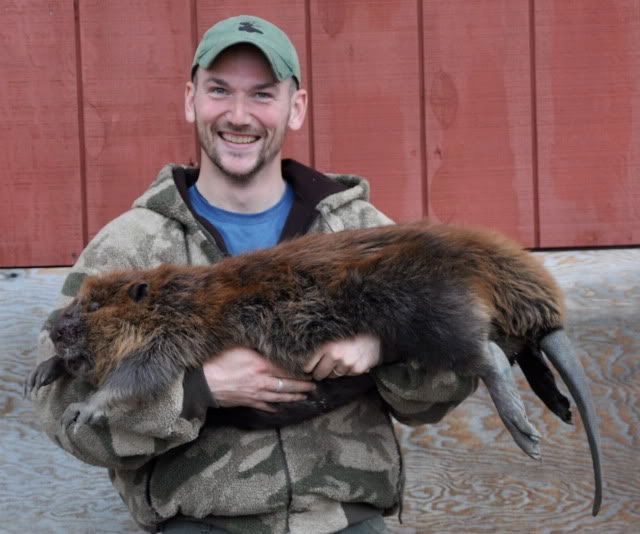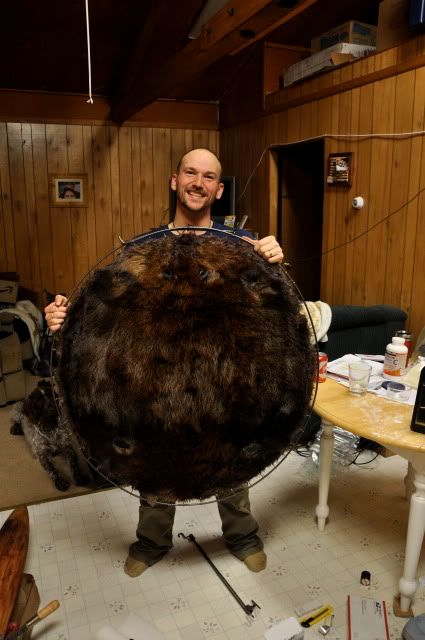I began the 09-'10 trapping season this fall. I resigned to give beaver snaring a try, in the hopes of getting some bait for the upcoming marten, fox, and lynx sets I am planning to be the main part of my line this winter. It was a beautiful time of year to be outdoors here on the Lower Yukon:

As of now, this is a post about 'the past', as I have basically pulled every beaver snare I had set, in preparation for the upcoming opener. My main priority was to learn what I could and enjoy a little early time on the 'line, as beavers are the only furbearer open in October. I learned quite a bit, as the beavers were glad to teach me a few things, making a fool of me at least a dozen times.... :)
The sets I made involved about a three mile walk, as we have no boat yet, and it is not yet snowmachine season. This walk upstream, combined with a little paddling of the Alpaca raft, takes you to a large slough (that's slew). This is the scene of ridiculous amounts of beaver activity. Everywhere you look, and I mean everywhere, it looks like this...

Predominantly, I constructed trail sets on the most active-looking trails leading to and from the water:

The beavers quickly showed me a lot of things I was doing wrong. Most mornings, I would find snares, pulled down to a very small size, but empty. Unless, of course, they were nice enough to leave me the branch they happened to be carrying when they encountered the snare. :) This happened more times than I would like to admit. I finally decided to change things a bit. Enough is enough. I began to hang snares up a little more off the ground than I had been. I tried different loop sizes. More fencing/blocking. Everything I tried was all guesswork, as I was totally new to beaver trapping of any kind, and new to snaring, period. Perhaps the most effective thing I learned however, was to use overhead fencing. This seemed to be the key, in my case. Any time I could force the beavers to duck under something and limit the amount of space they would be using to get through the sets, the better. This picture shows some truly excessive (I think, anyways) fencing on the sides, and this was not the norm, but several misses at this set, and apparently no refusals to brush past/through the loop, kept me increasing everything until success came calling - but - the idea worked:

Making them 'duck' limits the place they will have their head, and therefore, in my mind, limits where you need to have the snare loop. Make them do what you want them to do, or let them ignore you completely, was my motto. When making the sets, I would think, "Okay, you are putting your head and body RIGHT THROUGH HERE, or else you can just move on to the next trail, my friend." The short of the story is, they didn't always move on. :) And I learned something about snaring the beavs. This is the first, and largest beaver I ever caught - a pig of a rodent. He weighed in at 43 lbs:

Here he is on the hoop, measured at 71", XXXL on the grading scale:


